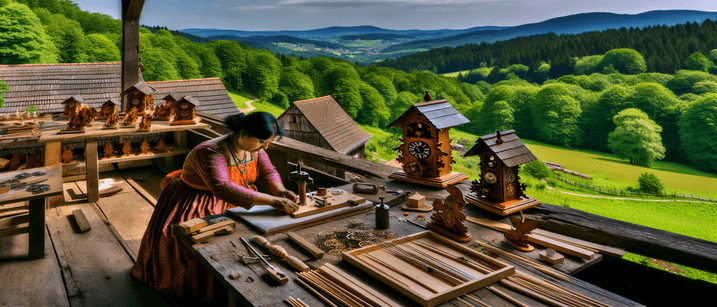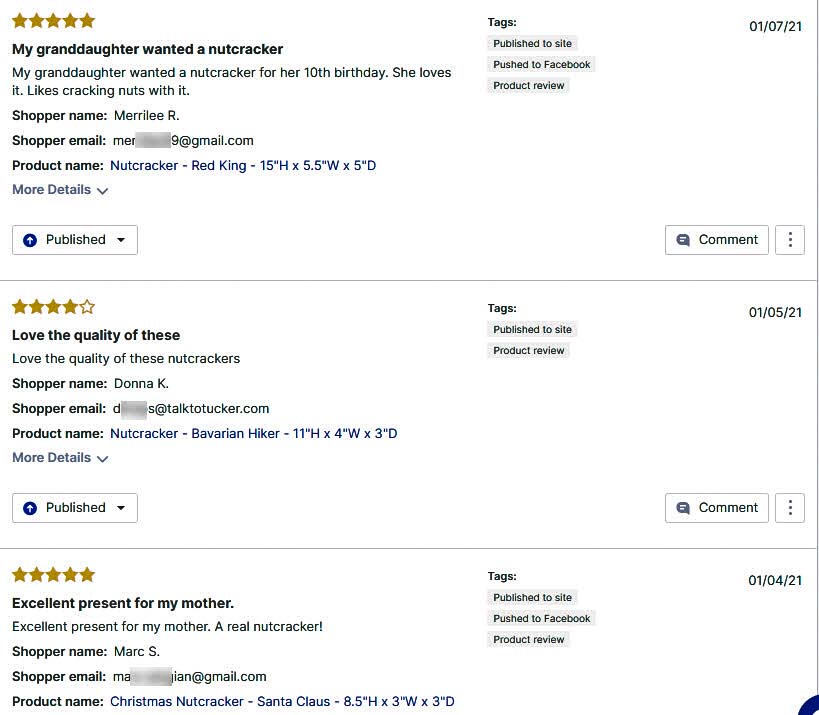The Origin of Black Forest Clock Making: Journeying Back in Time
The history of Black Forest clock making begins in the late 17th century, a time when the area was isolated due to harsh winters and rugged terrain. The inhabitants of this area in Germany discovered the art of creating timepieces primarily to pass the winter months, soon transforming this skill into an intricate craft and then a thriving industry.
“The history of these clocks is more than the ticking of time; it is a reflection of the resilience and ingenuity of a people.” Click here to learn more about the art and history of Black Forest clock making.
The earliest Black Forest clocks were driven by weights, using intricate wood carving and glass painting for decoration. Production was mainly concentrated around Furtwangen, Triberg, and Neustadt. The reputation of these stunning timepieces grew so widespread that they eventually found a home beyond the German borders, with clock peddling becoming a profitable trading business for the Black Forest inhabitants. For more about the journey of these clocks, check here.
The Craftsmanship Involved: More Than Just Ticking Clocks
Each step in the creation of a Black Forest clock involved a high degree of craftsmanship, requiring precision, patience, and above all, an eye for detail. From the area’s local wood used to create the clock, to the intricately designed and carved cuckoo bird, everything had to be perfect.
“In a world that rushes forward, the Black Forest clocks stand as an elegant testament to the beauty of slowing down.”
The detailed artistry in these clocks goes beyond their aesthetic charm – it’s a reflection of the region’s deep-rooted love for nature, tradition, and craftsmanship. The cuckoo bird, for example, is not just a gimmick, but a symbol of the region’s rich biodiversity. Modern versions may have automated machinery, but the true heart of these clocks remains firmly in the past, rooted in the legacy flowing from the hands of their early creators.
If you are looking for more information on cuckoo clocks, visit https://cuckooforest.com/a-brief-history-of-the-cuckoo-clock/.
Influence on Global Horology: The Black Forest Impact
Black Forest clock making has significantly impacted global timekeeping history. Their intricate designs coupled with mechanical marvels quickly catapulted these German antiques to fame, setting new standards in the field of horology.
“Crafted in the heart of the forest, these clocks resonated across the globe.” For a closer look at some masterpieces, check here.
Collectors around the world treasure these clocks for their craftsmanship and distinctive style. Additionally, they have inspired modern watchmakers to push boundaries in timepiece design and technology, reinventing and innovating while preserving the time-tested charm of tradition. Explore more about the legacy of these timepieces by visiting the link.
Artistic Expression in Cuckoo Clocks: A Unique German Tradition
The cuckoo clock stands as a unique expression of the artistic heritage and craftsmanship of the Black Forest. The distinctive sound of the cuckoo clock’s bird not only mimics the cuckoo’s two-note call but also symbolizes the deep connection of the Black Forest’s people to their natural surroundings.
“Every cuckoo clock tells its own story, a melodic proclamation of German legacy and tradition.”
Traditionally, these cuckoo clocks would be hand-carved depicting various scenes—from nature, families, and hunting scenes—to showcase rural life. The use of local wildlife and foliage not only adds an artistic layer but underlines the inherent love and respect for nature imbued within the region’s people. While modern cuckoo clocks may incorporate more contemporary designs, the traditional themes steeped in Black Forest life continue to resonate with both creators and collectors alike.
From Forest to Mantelpiece: The Journey of a Black Forest Clock
The journey of a Black Forest clock from the forest to a mantelpiece is steeped with tradition, labor, and love. Imagine artisans diligently crafting their timepieces from locally sourced timber—each cut, carve, and polish is a labor of love.
“They began amidst the heart of the forest and ended up encapsulating a piece of that heart within.”
Once the clock’s body is carved, it is passed to a clockmaker who installs the mechanism that will dictate the cuckoo’s call and timing. Each clock is then meticulously tested, ensuring the quality and distinctive call that epitomizes these unique creations. Whether for export or domestic use, each clock represents a piece of the Black Forest, its people, and their history. Owning a Black Forest clock is not about just owning a timepiece—it’s about owning a slice of cultural heritage, a monument of artistic mastery. For exquisite selections, visit the Cuckoo Clocks collection page.
Closing Highlights
In this post, we ventured on a fascinating journey through time and tradition, tracing the rich heritage of Black Forest clock making. From their origins in a remote region of Germany, these timepieces have evolved into a globally renowned cultural artifact, celebrated for intricate designs, superior craftsmanship, and genuine connection with nature.
The artistry inherent in cuckoo clocks showcases the region’s traditions and dedication to fine workmanship, while the journey of these clocks from forest to mantelpiece underscores the love and labor involved in each piece’s creation. Each tick echoes the beating hearts of the artisans who gave these timekeepers life, engraving a piece of the Black Forest in every carved detail and melodic cuckoo call.
The story of Black Forest clocks is a testimony that enhances our appreciation for the slow, thoughtful artistry often overlooked in this digital age—a craft steeped in tradition, an ode to the beauty of resilience, and the embodiment of German cultural heritage. Here’s the link to explore more about the Black Forest region.








